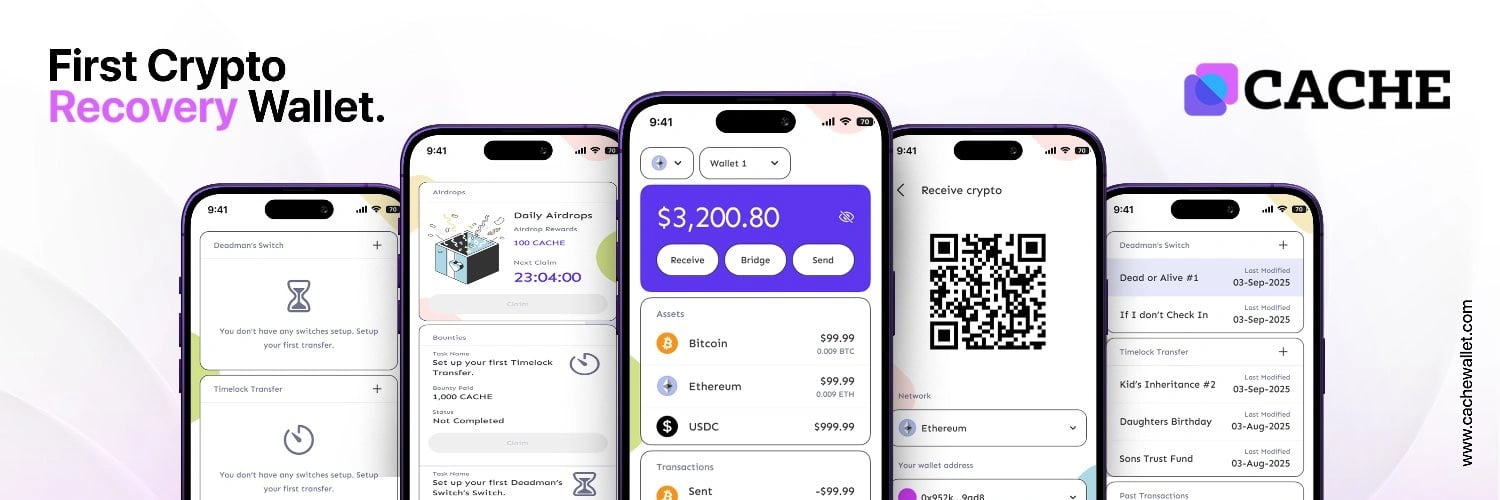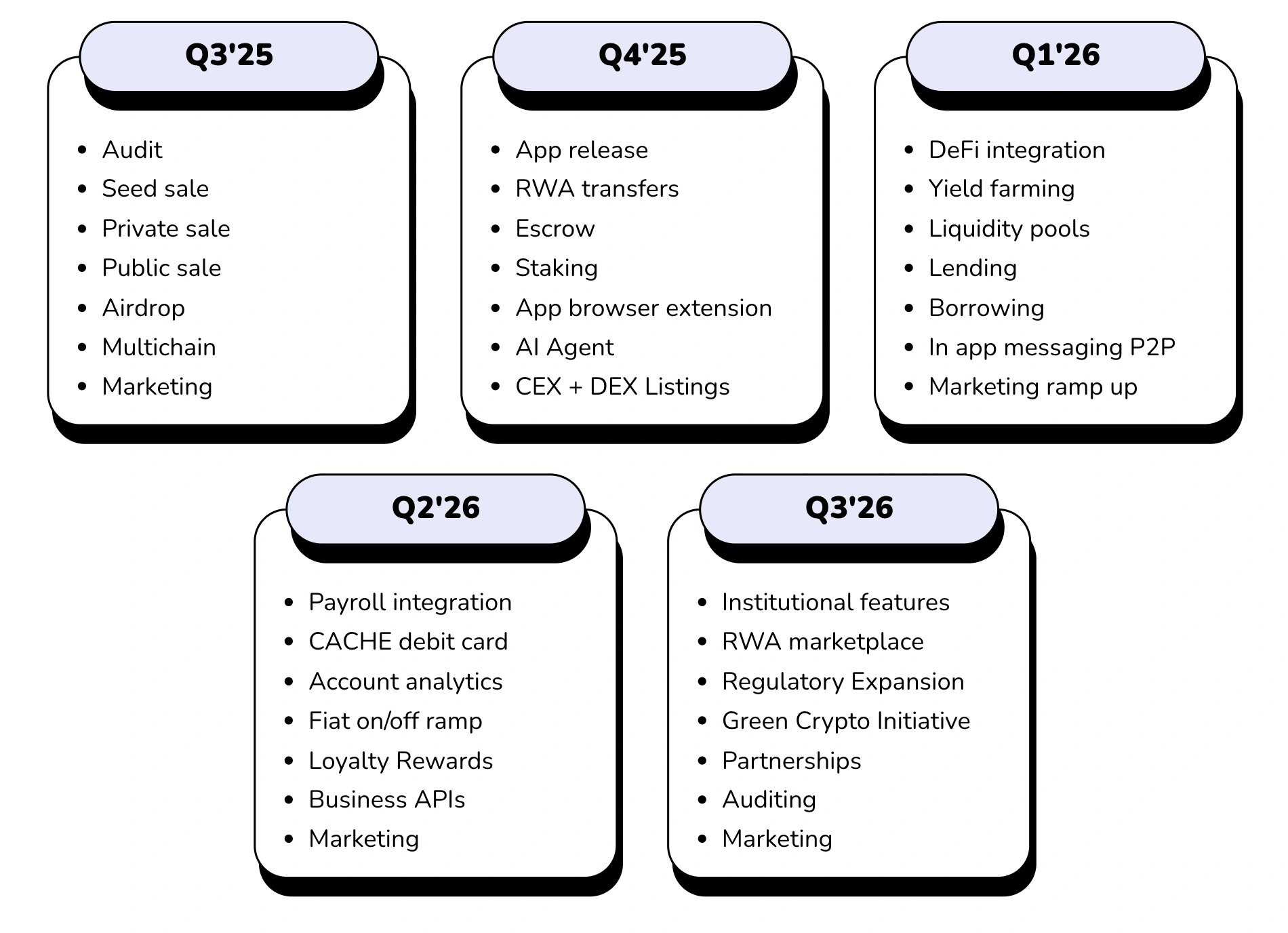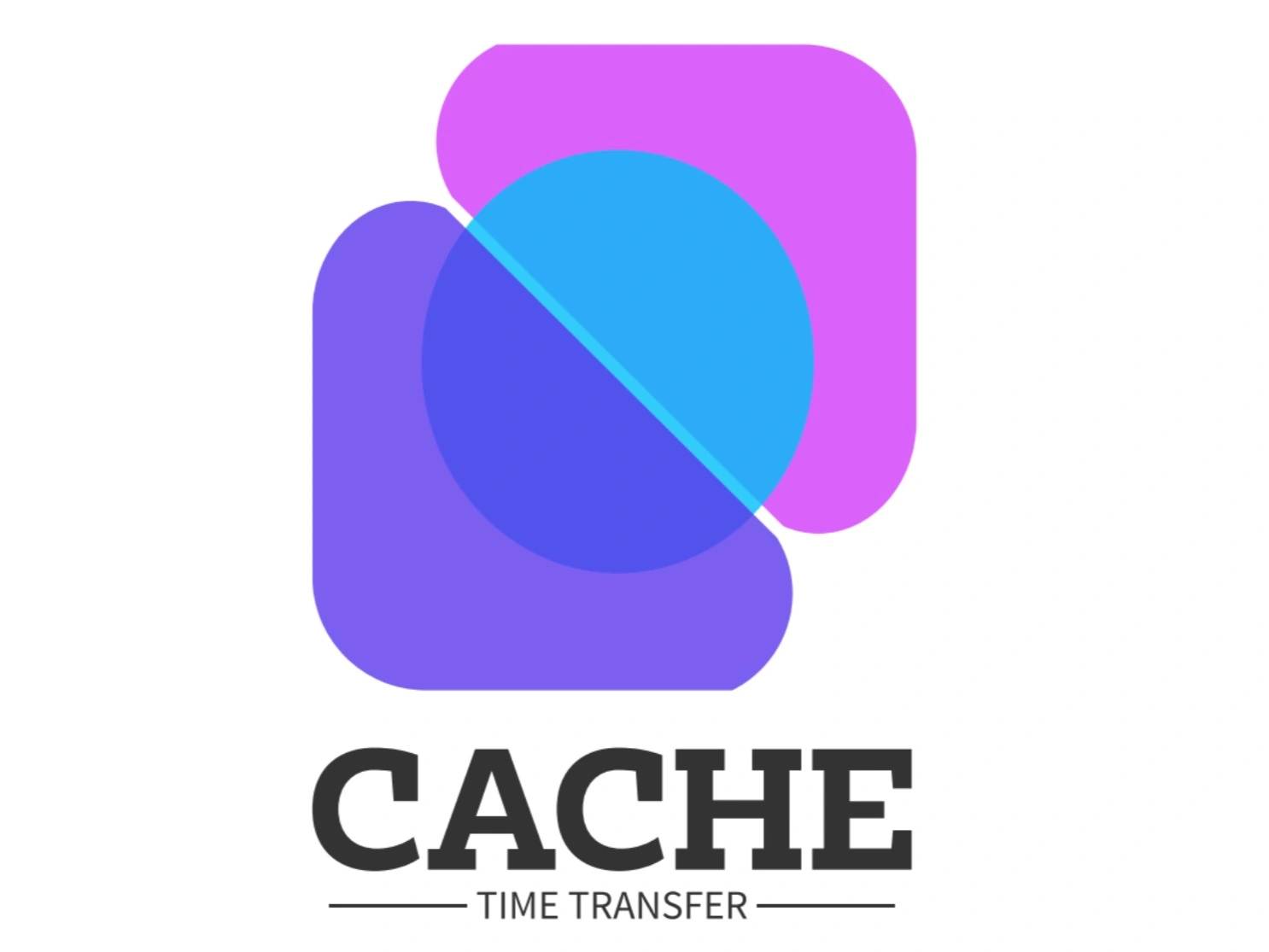Cache Wallet
Cache is a smart wallet ecosystem designed to address the issue of inaccessible or "orphaned" digital assets resulting from lost seed phrases, passwords, or private keys. The platform aims to provide wallet recovery and asset transfer functionalities without requiring users to store sensitive credentials. [1] [2]

Overview
The development of Cache is a response to the significant value of cryptocurrency assets that have become permanently inaccessible. Estimates suggest that billions of dollars in digital assets are locked in "orphaned" wallets because owners have lost the necessary credentials to access them. This issue presents a substantial barrier to broader cryptocurrency adoption, as no traditional financial account becomes permanently inaccessible under similar circumstances. Cache aims to solve this problem by creating a system where asset recovery is possible without storing private keys or seed phrases. The project's mission is to simplify wallet management and recovery to facilitate wider adoption of cryptocurrencies. The ecosystem is built around a smart wallet that incorporates several features for automated and secure asset transfers, including mechanisms for estate planning and escrow services. The platform's architecture is designed to support these functions through smart contracts and a proprietary mechanism. [3]
Products
The Cache ecosystem is composed of three primary products designed to work in conjunction to provide security and asset management services. [3]
Cache Smart Wallet
The core product is the Cache Smart Wallet, which serves as the primary interface for users. It is designed to allow for wallet restoration and asset management without the need for traditional private keys or seed phrases. Instead, it utilizes other security and recovery mechanisms built into its architecture. The wallet supports multiple blockchain networks and is intended to provide a user-friendly experience for both new and experienced cryptocurrency users. [2]
Escrow Module
Cache includes an enterprise-grade escrow solution that facilitates secure transactions between two parties. This module allows a buyer to transfer an agreed-upon amount to an escrow smart contract. The funds are held until a third-party arbiter reviews and approves the transaction based on predefined conditions, at which point the funds are released to the seller. This product is intended for high-value purchases and other transactions requiring conditional payment release. [2] [3]
Deadman’s Switch
The Deadman’s Switch is a feature for automated asset recovery and inheritance. Users can configure the switch to transfer the contents of their wallet to a designated trusted wallet after a specified period of inactivity. This rolling period is set by the user, and if the user does not interact with their wallet within that timeframe, the smart contract automatically executes the transfer. This function is designed to prevent assets from becoming orphaned in the event of the owner's death or incapacitation. [2] [3]
Key Features
- Easy Restore: This feature is central to the wallet's design, enabling users to restore access to their funds without needing to provide keys, passwords, or personal information.
- Decentralized Biometrics: The system allows users to create accounts using encrypted biometric data, which is stored on the blockchain to enhance security and facilitate recovery.
- Auto-Bridging Networks: The wallet includes a protocol for automatic bridging, allowing users to transfer assets between different blockchain networks without manual intervention.
- AI Agent: An integrated AI Agent is planned to assist users in setting up transfers, configuring recovery mechanisms, and utilizing other platform features.
- Real World Asset (RWA) Transfers: The platform is designed to support the creation and transfer of tokenized real-world assets through NFT integration, enabling use cases in estate and trust management. [2] [1]
- Decentralized Will: Users can set up automated transfers of their digital wealth and estate to beneficiaries, functioning as a decentralized last will and testament. [2]
Road Map

Architecture
Cache's architecture is built on smart contracts and operates across multiple blockchain networks. The platform initially supports Ethereum, BNB Smart Chain, Solana, Base, Polygon, and Optimism, with plans to integrate additional chains. [2]
A core component of its technical design is the Proof-of-Timelock (PoT) mechanism, for which a patent is pending. This feature allows users to schedule asset transfers to a specific wallet address at a future date. When a time-locked transaction is created, the system generates a non-fungible token (NFT) that serves as a digital record of the scheduled transfer. This mechanism underpins many of the wallet's key functionalities, including its estate planning and trust execution capabilities. The architecture is designed to be decentralized, with recovery processes managed by smart contracts rather than a central authority. [2] [1]
Tokenomics
The Cache ecosystem is powered by its native utility token, $CACHE. It is an ERC-20 token minted on the Base network. [1]
Token Utilities
The $CACHE token is integral to the platform's operation and has several planned utilities.
- Service Payments: Users utilize $CACHE to pay for services within the ecosystem, such as setting up time-locked transfers, creating escrow agreements, or activating the Deadman's Switch.
- Ecosystem Rewards: The token is used to reward participants within the Cache ecosystem, although specific reward mechanisms are not detailed. [1]
